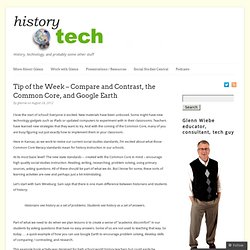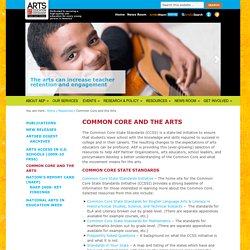

Performance-assessment-era-standards-based-educational-accountability_0. Historians see problems in history; students see answers: literacy in history. I love the start of school!

Everyone is excited. New materials have been unboxed. Some might have new technology gadgets such as iPads or updated computers to experiment with in their classrooms. Teachers have learned new strategies that they want to try. And with the coming of the Common Core, many of you are busy figuring out just exactly how to implement them in your classroom. Here in Kansas, as we work to revise our current social studies standards, I’m excited about what those Common Core literacy standards mean for history instruction in our schools.
At its most basic level? Let’s start with Sam Wineburg. Historians see history as a set of problems. Part of what we need to do when we plan lessons is to create a sense of “academic discomfort” in our students by asking questions that have no easy answers. I begin by asking kids to look at two different images and ask them to answer what seems like a fairly simple question: Why is there such a difference between the two images? ELA, Sci, SS/Hist Modules. Content Area Tasks, units, modules. Keywords (optional) Enter keywords (e.g., K.OA.3, informational text, arguments, quadratic equations, etc.)

Grade (select at least one) Subject (select one) NYC educators and national experts are developing Common Core-aligned tasks embedded in a unit of study to support schools in implementing the Citywide Instructional Expectations. Educators may choose to adopt these resources in their entirety or adapt the materials to best address students’ diverse needs. Common Core Big Idea Series 1: A New Blueprint. Editor's note: This is the first post in a five-part series which takes a look at five big ideas for implementation of the Common Core State Standards, authored by Jay McTighe and Grant Wiggins In our travels around the country since the Common Core Standards were released, we sometimes hear comments such as, “Oh, here we go again;” “Same old wine in a new bottle;” or “We already do all of this.”

Such reactions are not surprising given the fact that we have been here before. A focus on standards is not new. However, it a misconception to assume that these standards merely require minor tweaks to our curriculum and instructional practices. In fact, the authors of the Mathematics Standards anticipated this reaction and caution against it: “These Standards are not intended to be new names for old ways of doing business.”
To invoke a construction analogy: Think of the grade-level standards as building materials. Additional free tools. CC Curriculum work examples. Common Core and the Arts. The Common Core State Standards (CCSS) is a state-led initiative to ensure that students leave school with the knowledge and skills required to succeed in college and in their careers.

The resulting changes to the expectations of arts educators can be profound. AEP is providing this (ever-growing) selection of resources to help AEP Partner Organizations, arts educators, school leaders, and policymakers develop a better understanding of the Common Core and what the movement means for the arts. Common Core State Standards Common Core State Standards Initiative – The home site for the Common Core State Standards Initiative (CCSSI) provides a strong baseline of information for those interested in learning more about the Common Core.
Selected resources from this site include: Common Core State Standards for English Language Arts & Literacy in History/Social Studies, Science, and Technical Subjects – The standards for ELA and Literacy broken out by grade level. Common Core Tools and Resources. A King's Skeleton, a Musical Mystery, a Territorial Dispute. Andrew Testa for The New York TimesA council worker fixed a camera at the parking lot in Leicester, England, where archaeologists unearthed a skeleton, very likely Richard III’s, amid the remains of an ancient priory.

Go to related article » Each Friday we post three short tasks that Sarah Gross and Jonathan Olsen, New Jersey team-teachers, tried that week with their ninth-grade humanities students. In their classroom, The New York Times is part of every day’s lesson plan, and, as they described in our initial post, they begin most mornings with quick exercises like the ones you see below.
This week, one of their students even suggested an extension activity since, Mr. Olsen tells us, the class loved the “Rebecca” prompt so much. Of course, this feature is just one of many ways we suggest using The Times, a daily flood of “informational text,” to teach and learn. We also hope you’ll encourage students to choose their own Times articles (or multimedia) to read and write about. However, Mr. Math CC_Unit_Template. Gr 2 fairy-tale-common-core-unit-and-freebie. Share My Lesson - Free K-12 Resources By Teachers, For Teachers. Literacy Design Collaborative. The Periodic Table of Videos - University of Nottingham. The Scale of the Universe 2.